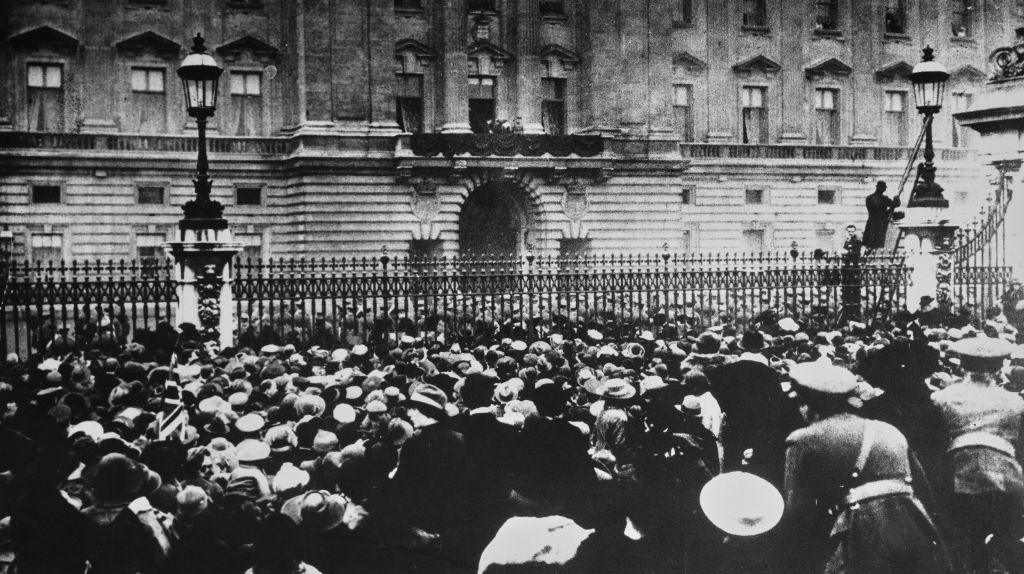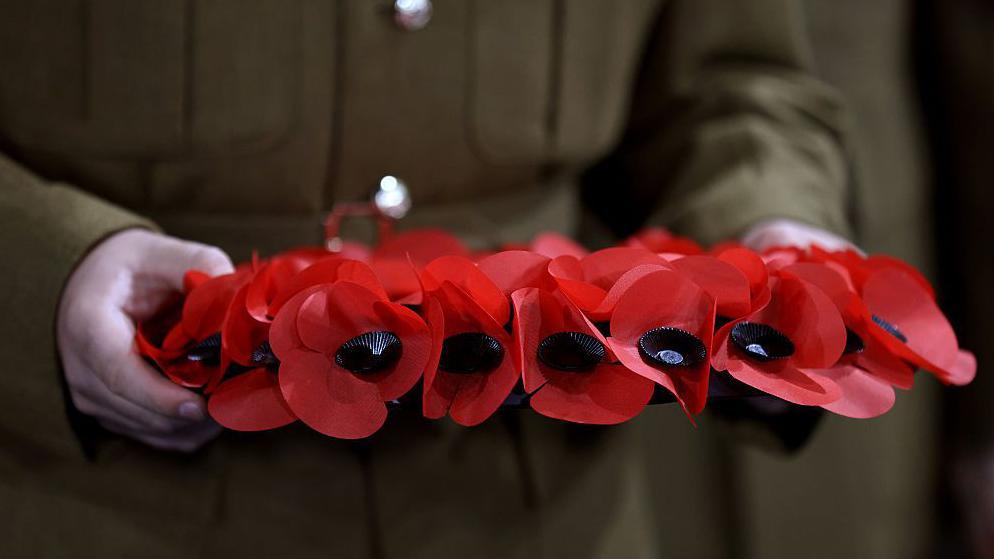Remembrance Day: What is it and why is it important?

- Published
Every year people across the UK come together to remember those who have died in wars across the world.
Remembrance Day marks the day World War One ended - at the eleventh hour of the eleventh day of the eleventh month, in 1918. It is also known as Armistice Day.
Ceremonies also take place on the second Sunday in November - this is known as Remembrance Sunday.
This year Remembrance Sunday falls on 9 November.
Why do we mark Remembrance Day?
Remembrance Day began as a way to commemorate the end of World War One.
In the autumn of 1918, Germany was losing the war, and asked for an armistice, or end to the fighting.
At 11am on 11 November 1918, the armistice began.
The following year King George V asked the British public to observe a silence at 11am - to remember the moment the guns fell silent.
It became known as Armistice Day - a day to remember the end of WW1 and to remember the lives lost.
Ricky was in London as celebrations to mark VE Day took place to commemorate the 80th anniversary this year
Today Armistice Day is used to remember all the people who have died in all wars since.
This year also marks 80 years since World War Two ended, in 1945.
There have been many events to commemorate Victory over Europe (VE Day) on 8 May and Victory over Japan (VJ Day) on 15 August.
"Anyone who wants war must be stopped" VE Day 80 years on
How is Remembrance marked in the UK?
On Remembrance Sunday a wreath is laid at the Cenotaph in Whitehall, in London, by the King as head of the Armed Forces.
A two minute silence also takes place - on both Remembrance Sunday and on Remembrance Day itself.
Millions of people in the UK and around the world pause to remember and pay respects to those who died during wars.
VJ Day 2025: 'My great grandfather won the Victoria Cross'
Members of the Royal Family, politicians, the armed forces and communities attend memorial services.
There are ceremonies at war memorials, cenotaphs and churches throughout the country and in other parts of the world.
The Cenotaph Parade is a march of around 10,000 veterans, that takes place every year on Remembrance Sunday, following the National Act of Remembrance.
Why is there a two minute silence?
The first two minute silence in Britain was held on 11 November 1919, when King George V asked the public to observe a silence at 11am.
This marked exactly one year since the end of World War One, a war that lasted for four long years.

On 11th November 1918, crowds gathered when the Royal Family appeared on the balcony of Buckingham Palace
The king called for silence on the "eleventh hour of the eleventh day of the eleventh month" so that "the thoughts of everyone may be concentrated on reverent remembrance of the glorious dead".
Why do people wear poppies?
From the end of October through to November, you may start seeing people wearing poppies and see poppy wreaths at memorials in towns and villages.
During World War One much of the land in France and Belgium that was fought on was churned up and destroyed by battle.
But one of the first plants to reappear were delicate red poppies, which grew on the soil and rubble.

The poppy became a symbol of loss and of hope - a reminder of the sacrifice made by those who died in war and hope for the future.
Paper versions of the flower are now sold to raise money to support members of the armed forces, veterans and their families.
